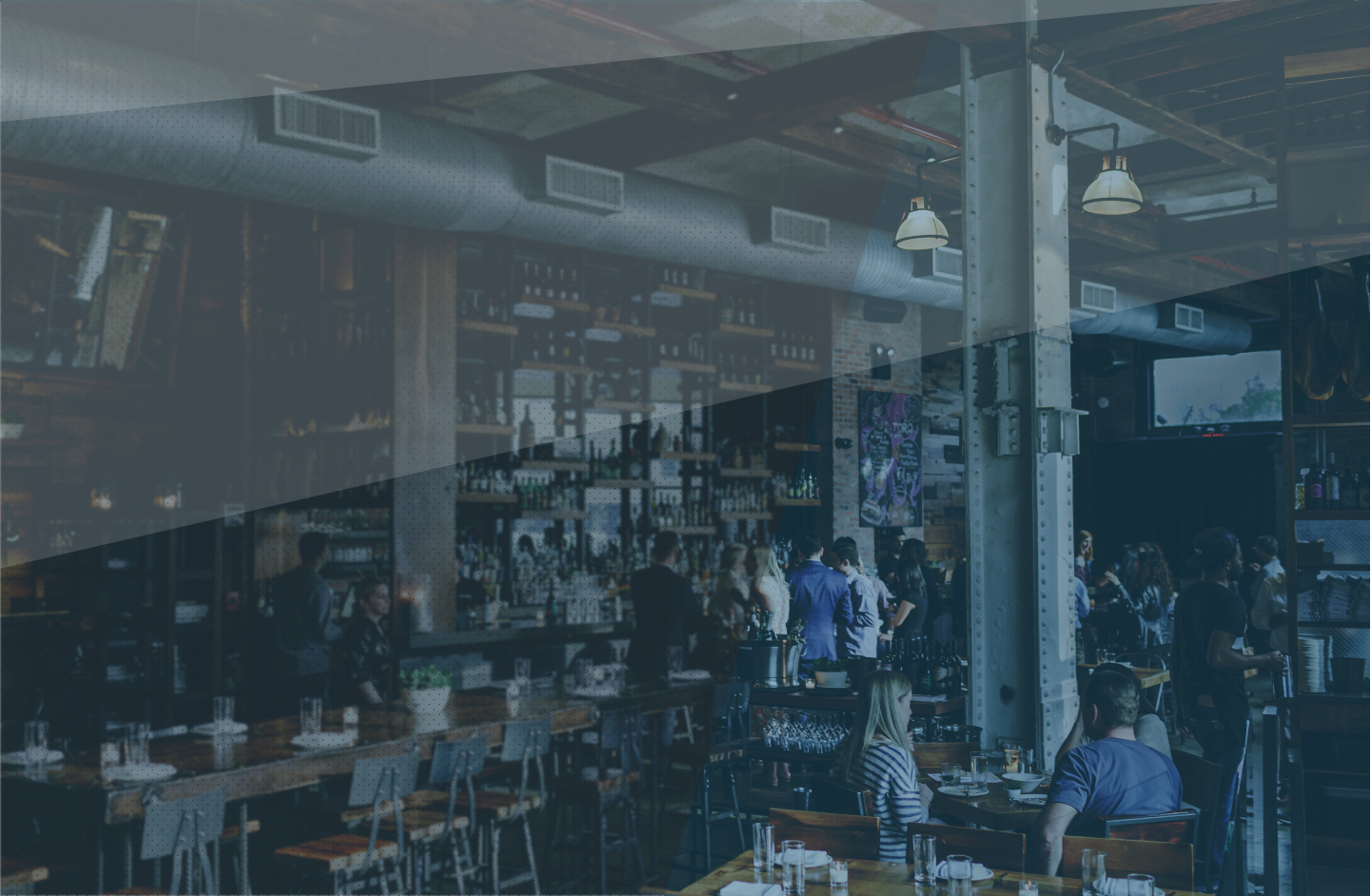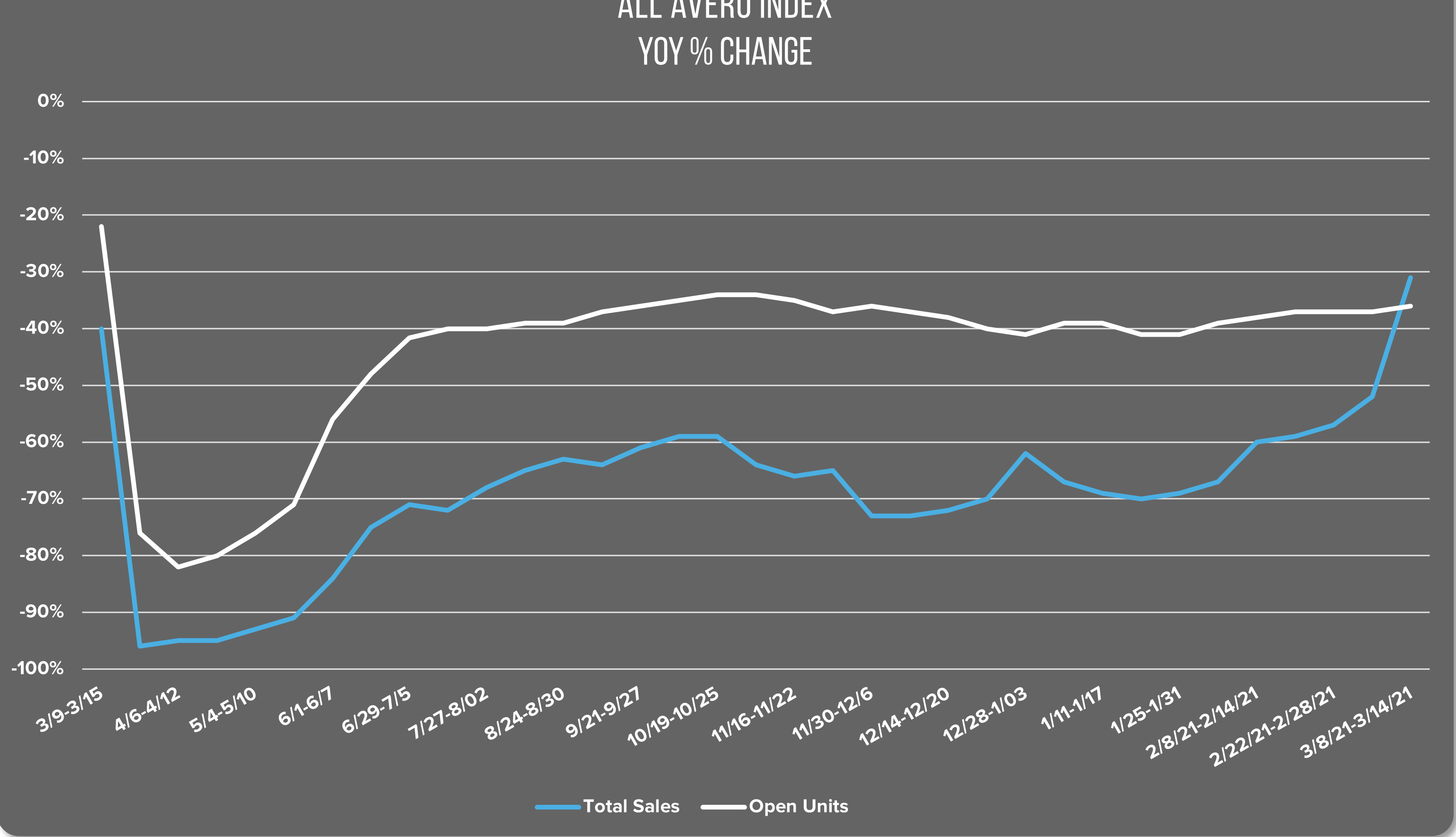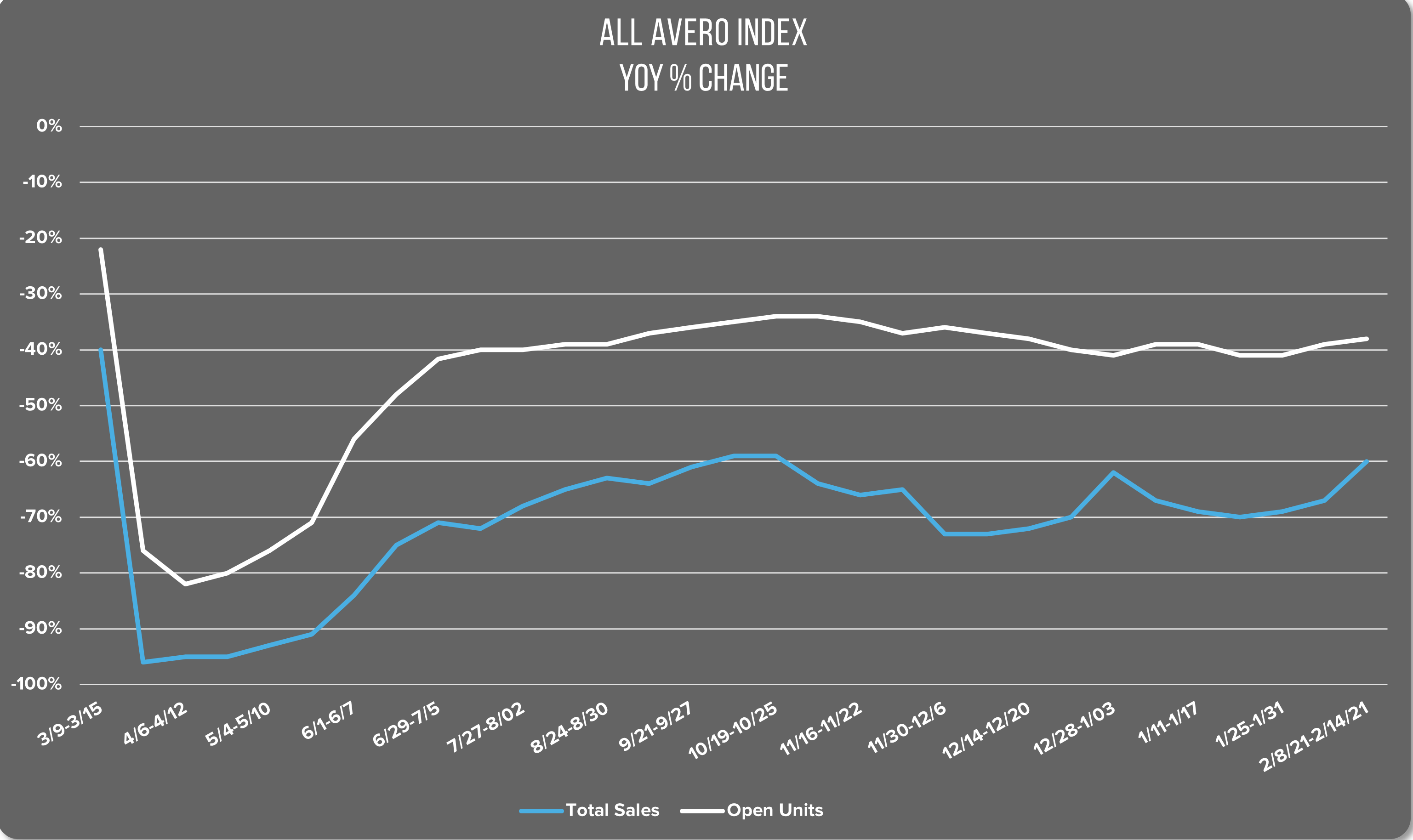Avero Index: 2018 Year in Review
2018 was a pretty good year for restaurants nationwide. Trends like farm to shaker cocktails, plastic straw bans, and food waste reduction made industry headlines all year. With our year-end analysis complete, we’re reporting another 2018 trend—higher sales. Out of 12 months, only three saw a decrease in YOY sales in 2018—July, September, and November. Overall, 2018 sales were slightly higher than 2017 sales. This small but steady increase occurred, despite the equally steady decline in covers.
Avero analysts reviewed national restaurant sales and traffic over the last year and consulted some of our expert users across the nation for their specific insights. Here’s what we learned.
Nationally, restaurant sales managed to outperform 2017 with a marginal 0.3 percent increase while covers saw a more significant drop of 2.7 percent. As we’ve reported throughout the year, this trend continues due to a stronger increase in average check making up for the decrease in traffic. Unfortunately, this cycle of increasing prices and decreasing traffic has continued and has resulted in the highest restaurant price jump since 2011.
Along with increasing average checks, new opportunities for sales also helped restaurants stay afloat. As third-party delivery services continue to increase, restaurants report increases of 20-30 percent in delivery and takeout sales.

Anthony Rico, Director of Food and Beverage at Harrah’s Las Vegas confirms this ongoing trend of increasing average check prices as covers continue to drop. Specifically in Vegas, the third quarter of 2018 saw strong drops in cover. Rico blames this drop in decreased convention bookings in Vegas. As other cities, such as Dallas, Nashville, and Orlando, have begun developing large convention spaces and large hotels to host some of the country’s largest conventions, Vegas has seen drops in their yearly convention traffic. To combat the drop in traffic, Rico’s restaurants employ two different strategies: training their servers to sell more product, and simply menu engineering their prices to drive revenue.
Jaap Boelens, Director of Food and Beverage at InterContinental Mark Hopkins in San Francisco, also cites convention trends as an explanation for the change in traffic in San Francisco. This time, for the better. Unlike Las Vegas, covers in San Francisco grew by 1.7 percent this year. Boelens cites the newly expanded Moscone Center for the uptick in restaurant traffic in the area. In April 2017, the center began a $500 million expansion project resulting in intermittent closures, ultimately causing a projected loss of 290,000 visitors to the city. Historically, the center alone is responsible for 21 percent of the city’s tourism, so losing it even temporarily meant a big loss for local restaurants.
In 2018, with much of the renovation complete, bookings at the convention center returned and with them came growth to both restaurant sales and traffic. San Francisco’s growing restaurant sales trend is seen in the month over month sales comparison in San Francisco as well, where July was the only month with decreased year-over-year sales.
Avero Index: December
This December, almost every city examined in the Avero Index saw improved year-over-year restaurant sales for the month. Sales almost always increase in December, relative to other months. The size of the 1.5 percent YOY December increase this year may be due in part to the day of the week on which the holidays fell. Christmas Eve, Christmas Day, and New Year’s Eve all fell on weekdays this year, whereas for the past two years, the holidays have fallen on weekends.

San Francisco experienced an even bigger YOY increase in December of 4.6 percent. Boelens agrees with our Avero experts’ analysis that adding three more non-working days to the calendar likely resulted in more customers heading out to celebrate at restaurants instead of being stuck at work.

Atlanta was the only city other than San Francisco that saw growth across both sales and covers in 2018 coming in with a 3.1 percent increase. Being the country’s third fastest growing metro-area, its not a big surprise that restaurants are capitalizing on the city’s growth. Atlanta has also recently implemented tax credits for TV and movie production which has brought in over 455 productions in 2018. This influx of business to the city is not only boosting restaurant traffic but has also improved the city’s status as a “foodie” destination.

See the YOY December performance of restaurants in additional cities below.











